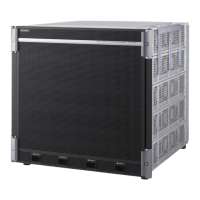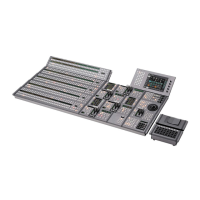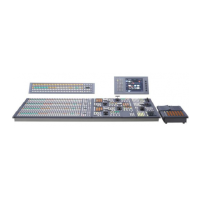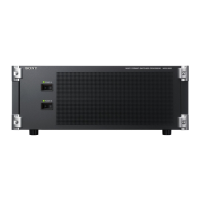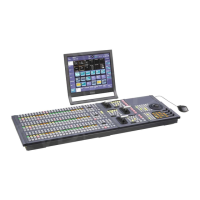Chapter 7 Frame Memory
385
Still Image Operations
Selecting an Input Image
For the input image to frame memory, you can use either the signal selected on
one of the two frame memory source buses or a dedicated color matte signal.
When using the signal on frame memory source bus 1 or 2 for the input image,
select the signal as described below.
For the method of using a color matte signal, see “Freezing an image and
writing it to memory” (page 387).
Selecting the signal on a frame memory source bus
As an example, to select a signal on frame memory source bus 1, use the
following procedure.
1
In the auxiliary bus control block, press the AUX delegation button to
which frame memory source bus 1 is allocated, turning it on.
For allocation of buses to the AUX delegation buttons, see “Assigning a
Bus to an AUX Delegation Button” in Chapter 19 (Volume 3).
On a CCP-6224/6324 control panel, you switch the cross-point control
block for use as an AUX bus control block. For details of the switching,
refer to the Setup menu (“Auxiliary Bus Control Block Settings (Aux
Assign Menu)” in Chapter 19 (Volume 3)).
2
In the auxiliary bus control block cross-point buttons, select the signal to
be used for the input image.
To select a signal with a key or DME effect applied on the frame
memory source bus
In the key control block, press the [FM FEED] button, turning it on.
This automatically assigns the key fill and key source signals being keyed by
the currently selected keyer to frame memory source buses 1 and 2.
When DME is selected on the keyer, the key fill and key source signals to
which a DME effect is applied are assigned.
Selecting Outputs and Target Frame Memory
Selecting outputs (FM) and target frame memory
The following description applies to the case of settings for FM1&2, but the
procedures are similar for the other cases.
